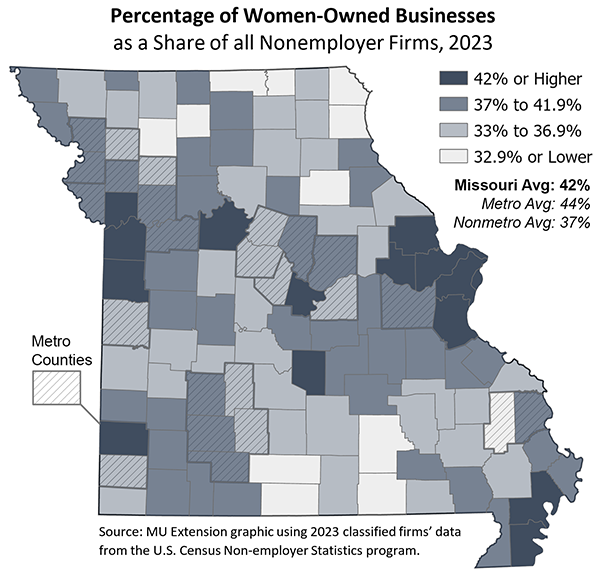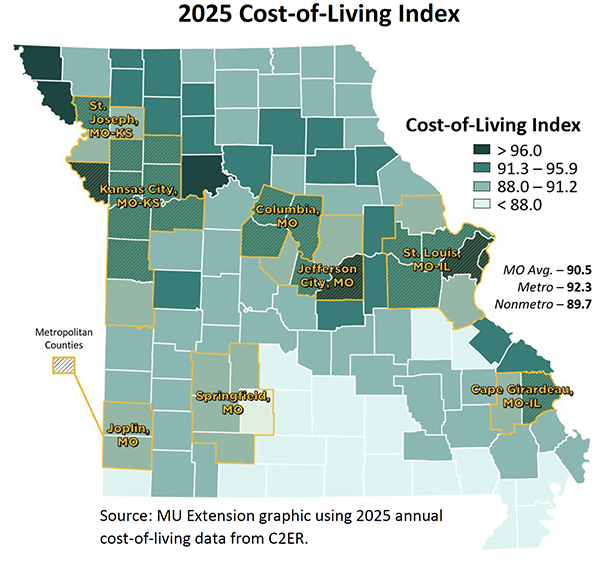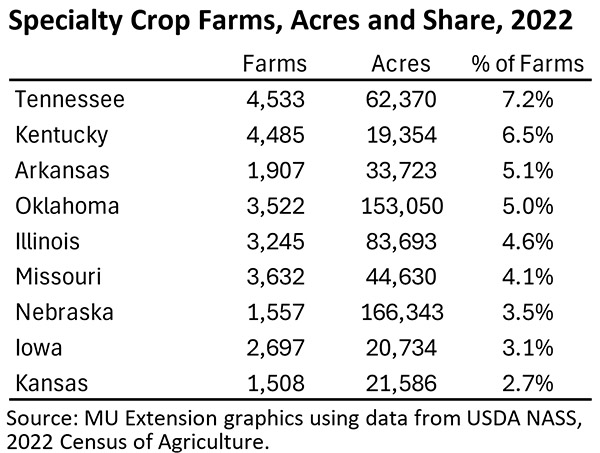Recent issues
Vol. 6, Issue 15: Women-Owned Businesses – December 15, 2025 (PDF)

Women-owned businesses account for just over half (51%) of Missouri service sector firms. In one of Missouri’s fastest growing job sectors—health care—two out of three firms (67%) are owned by women. Women-owned sole proprietorships are more prevalent in Missouri’s metro areas, where they account for 44% of firms, compared with 37% in nonmetro counties.
Vol. 6, Issue 14: Cost-of-Living and Inflation – November 17, 2025 (PDF)

Missourians benefit from a lower cost of living that is typically 90% of the national average, which is also reflected in comparatively lower wage levels. Living costs are higher in Missouri’s metros (92.3) compared to nonmetro areas (89.7). Southern Missouri counties had the lowest cost of living in 2025.
Vol. 6, Issue 13: Specialty Crop Farming – Oct. 27, 2025 (PDF)

Specialty crops — such as fruits, nuts, berries, vegetables, potatoes, nursery and greenhouse products, and Christmas trees — are a diverse part of Missouri’s agricultural economy. In 2022, Missouri had 44,630 acres planted in specialty crops across 3,632 farms (4.1% of all MO farms). Among its neighboring states, Missouri stands out in elderberry, grape and peach production, with the most acres in active production and bearing fruit.